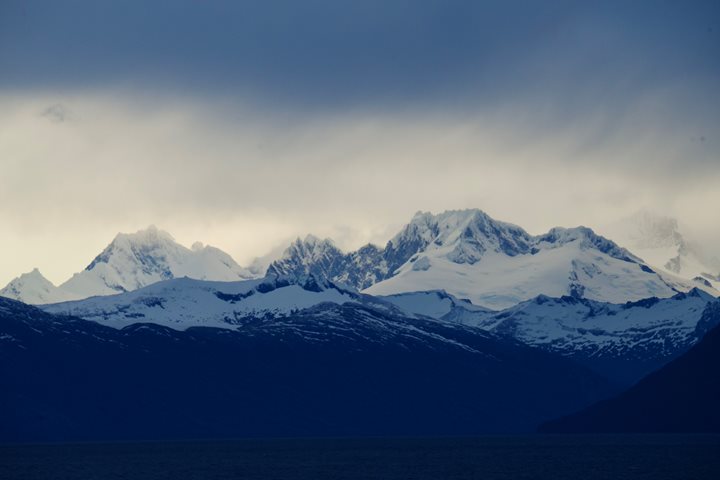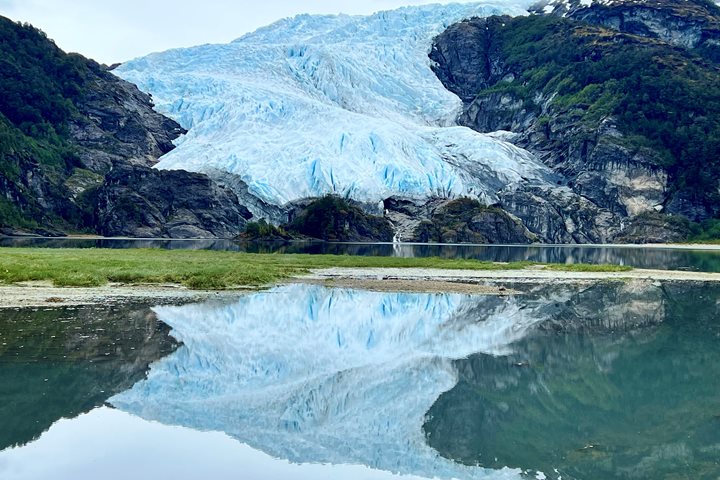Having the opportunity to visit this icon of Patagonia for the day is one of the many highlights of our expedition, and it didn’t disappoint. This landscape has been shaped by glaciers thousands of years ago with the vestiges of that era still clinging to the surrounding peaks. Winds and water have been putting the finishing touches on it since the last Ice Age ended, and one can only expect that when exploring the Patagonia steppe, or Pampa, you’ll be touched by both. At just under 500,000 acres or 700 square miles, Paine (blue) sees almost a quarter million visitors each year. The Paine Cordillera is the central feature with its torres (towers) of granite reaching over 2,500 meters. Not part of the Andes Mountains, the Paine massif is only 80 million years old and is a distinctive geologic formation. Today we set out to get the most of our time here. Half set out on a near 5 mile hike through the steppe, where guanaco roamed along the trail, Andean condors soared overhead, and even an elusive puma was spotted rested under a granite cliff face observing its domain. The remainder of our guests set out to see more of the park, stopping at the various points of interest to take it all in.
11/10/2024
Read
National Geographic Resolution
Garibaldi Glacier, Romanche Fjord, and Beagle Channel
The first rays light up the northwestern branch of the Beagle Channel. In the distance mountains glow in pale yellows and oranges as well as the water’s many birds, including a flock of hundreds of sooty shearwaters as they search for food. By breakfast we are at the entrance of the Garibaldi Fjord, steep gray rock walls on either side, and at the end the beautiful eponymous glacier. We head out on Zodiac cruises to get closer views of the tortured rocks, beautiful waterfalls, stunted forests, and of course wait for the glacier to calve. It obliges us many times. During the afternoon, we nose into the Romanche Fjord and then head out to sail along the Beagle Channel. Along the way we encounter many seabirds. Before dinner we attend the captain’s farewell cocktails and enjoy the guest slideshow before heading down to our special asado dinner! Our remarkable expedition through the Chilean Fjords is coming to an end. We have all witnessed some amazing wildlife encounters and marveled at the beauty of the Torres del Paine Massif. Memories we have aplenty, which will be cherished for many a year.







